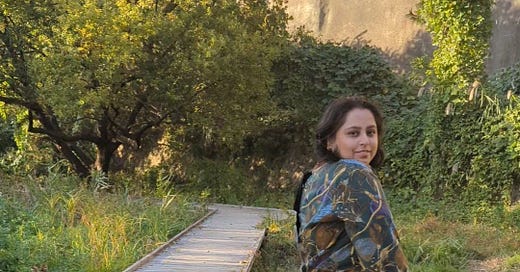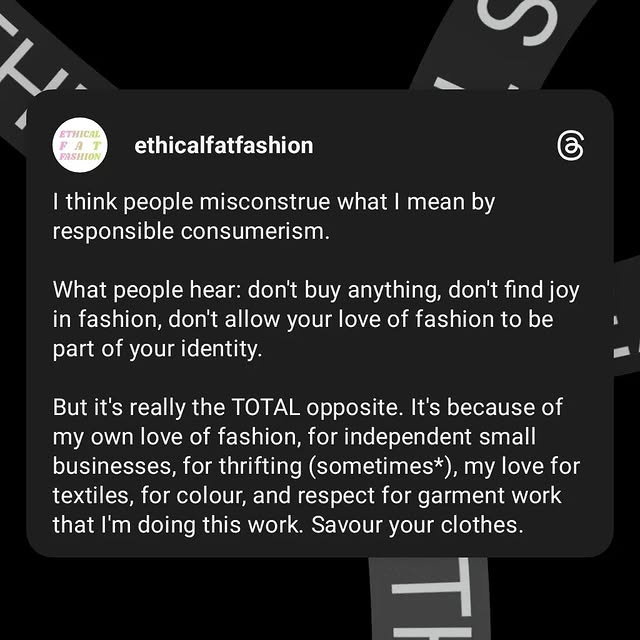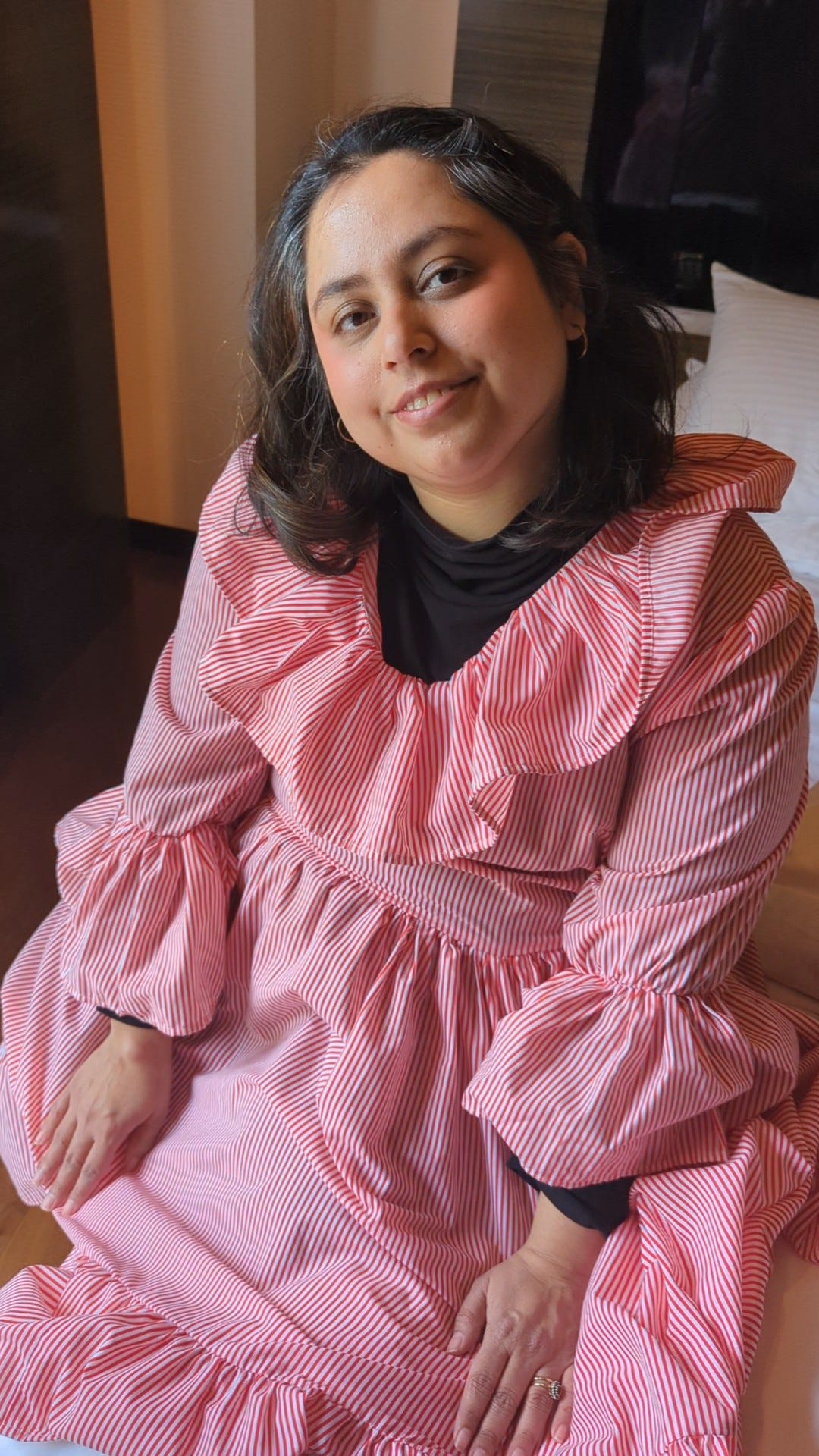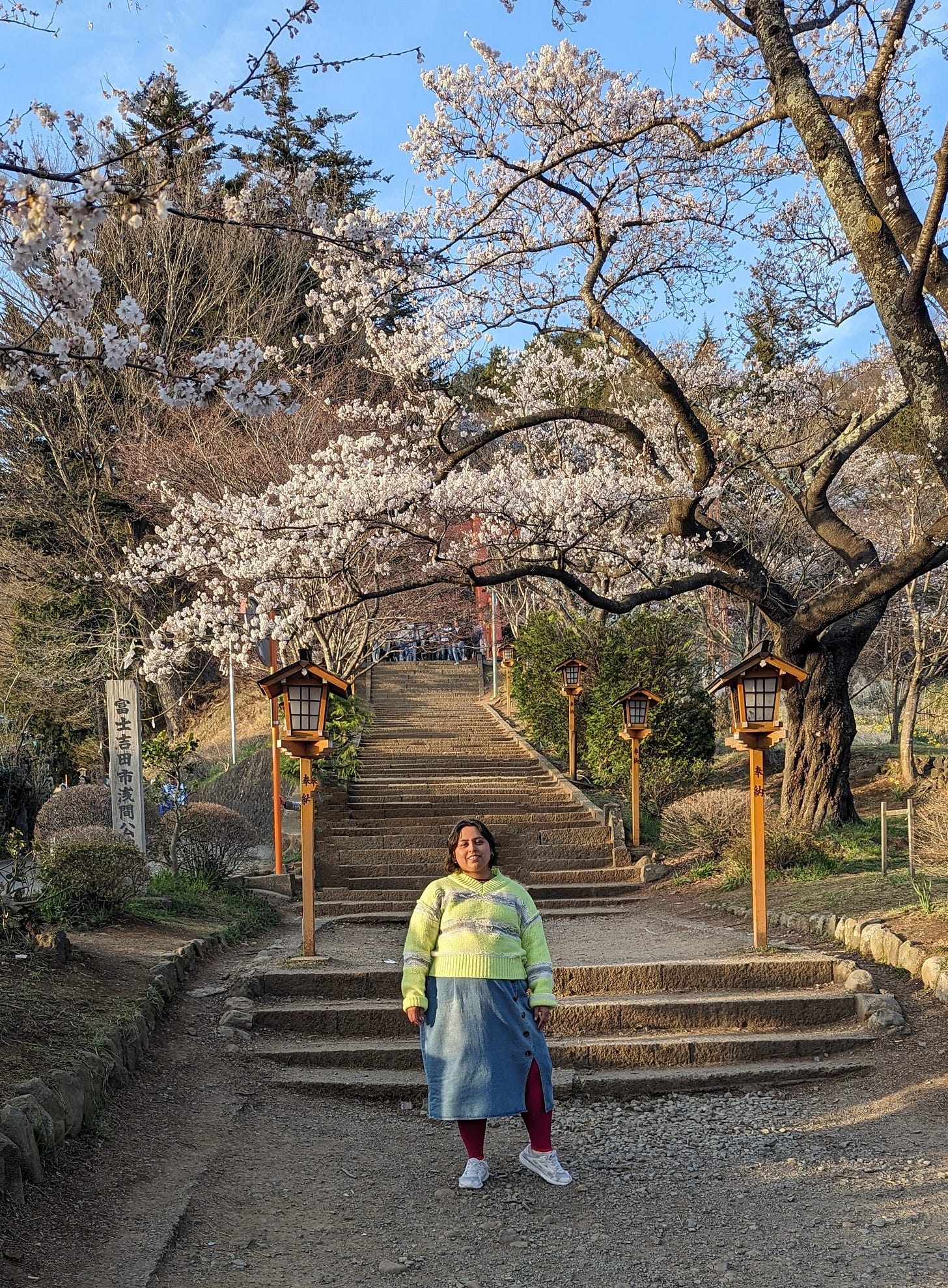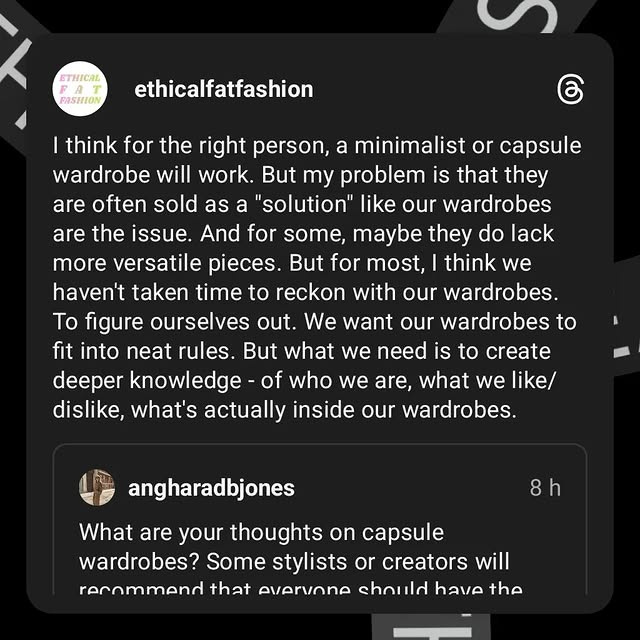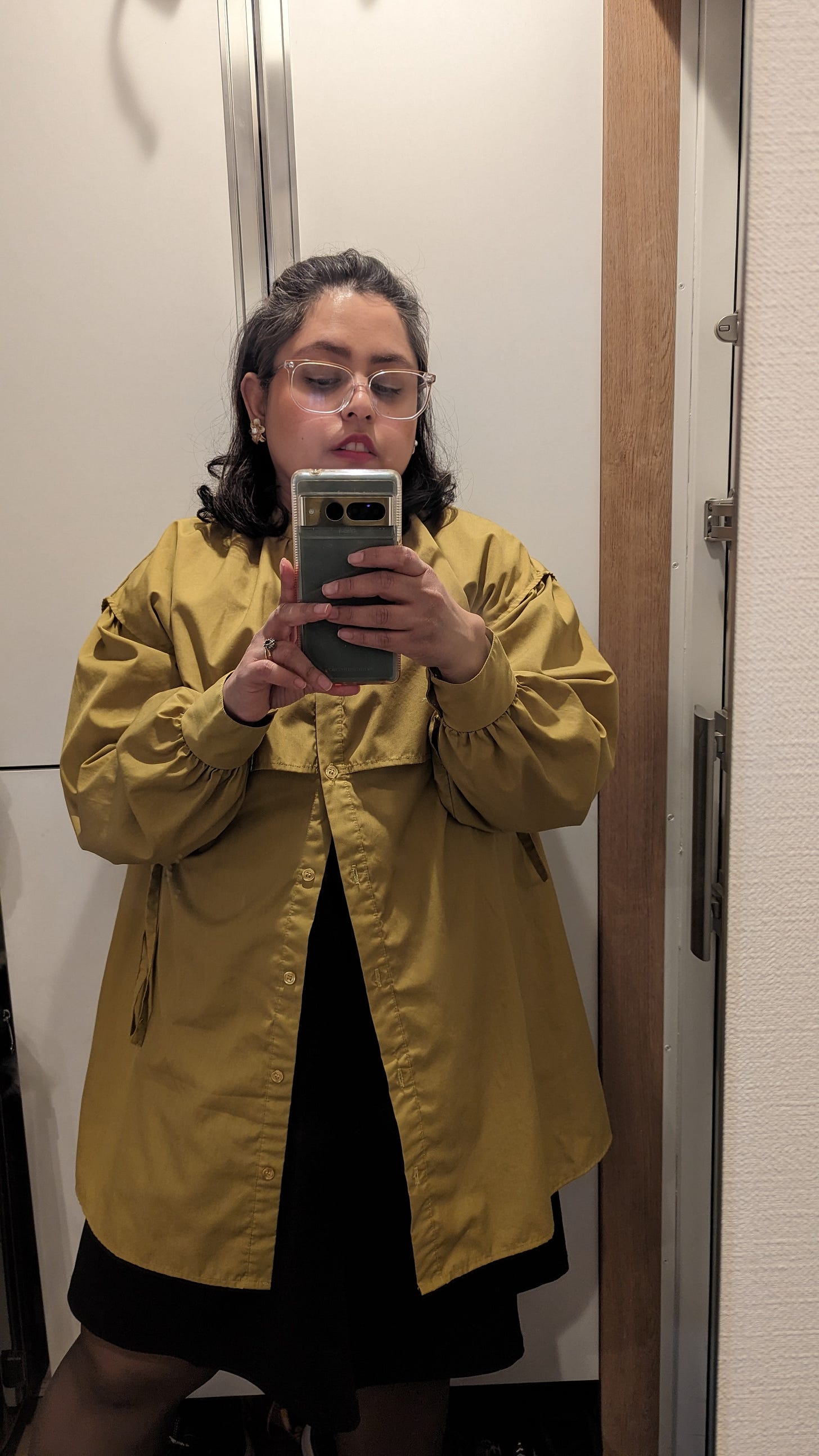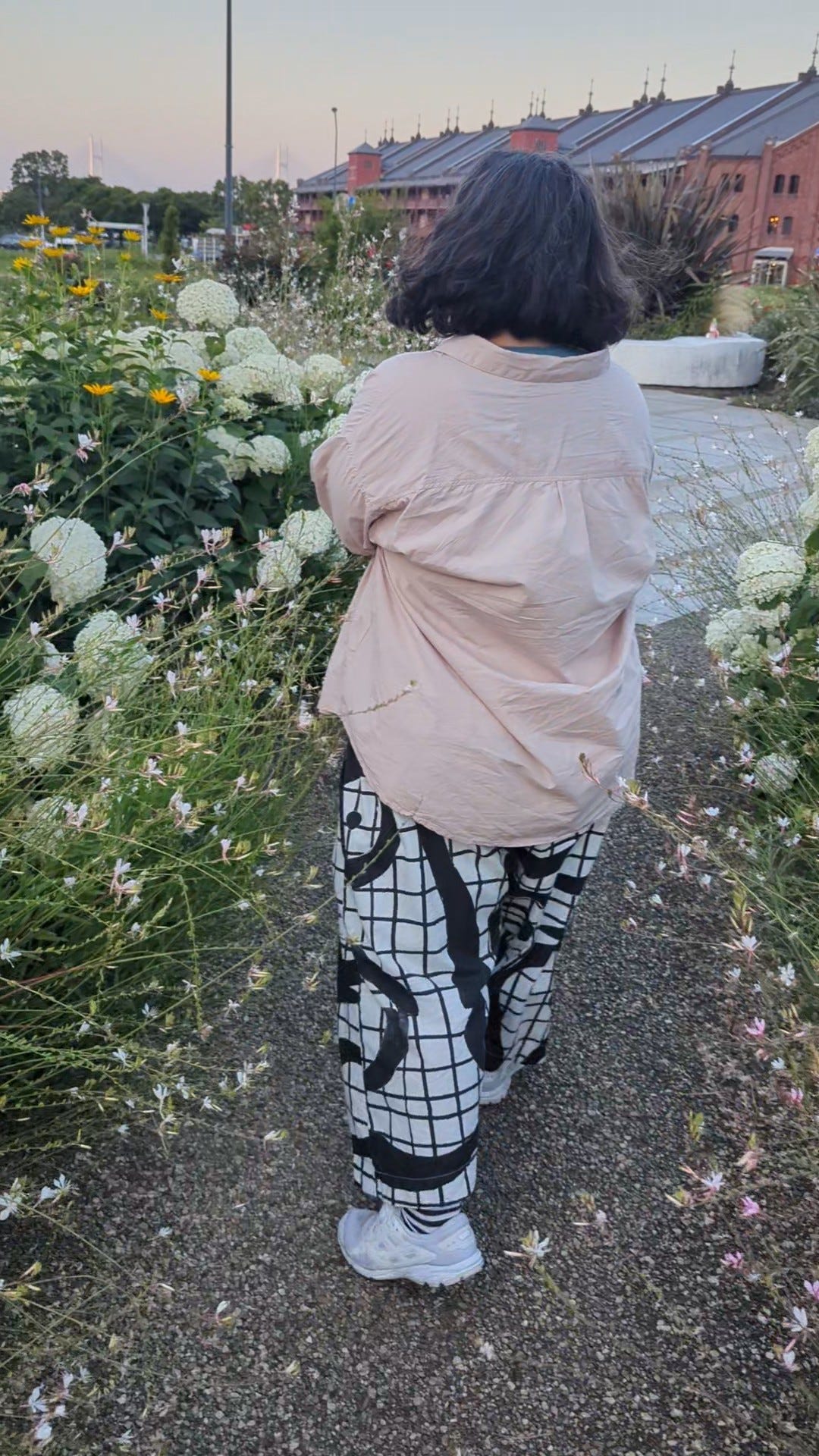Preface: like all of you, I’ve been watching the horror unfold in LA over the last week. I can’t imagine the collective trauma that city is going through. There is no comparing tragedy, but some have noted that families in the historically Black community of Altadena have received significantly fewer donations than some others. Here is a list of Go Fund Me’s for that community.
I first came across
on Instagram several years ago. Sometimes there are just people whose beliefs and thoughts align so closely with yours that you have a strong sense of recognition of a kindred spirit, and that’s what I felt with her. In addition to her writing, Sushmita curates a valuable ethical fashion brand directory for sizes 18 and up. The more I got to know about her, the more intriguing I found her. Sushmita was and still is living in Japan. I was lucky enough to be able to travel in Japan for several weeks in the summer of 2002. As this was over twenty years ago, I had a much different, and much smaller body. Even so, it was almost impossible for me to find clothes that were large enough to fit me. The fact that Sushmita is doing all of this thinking about fashion and brands all over the world and cultivating her own personal style in a mid fat body while living in a place with scarce resources for anyone above a US size 6 or 8 (hard to believe, but true) is fascinating. I tend to give most people the benefit of the doubt and lots of slack when it comes to buying fast fashion, but I really appreciate that Sushmita reminds me that the people making fast fashion deserve the same empathy. I’ve continued to appreciate all of her writing and the gentle interrogation she invites. Please enjoy!Q : Introduce yourself, your work, and how you spend your time.
A: I'm Sushmita, artist-writer currently living in Tokyo and I create newsletters that focus on ethical fashion, size inclusivity, body image and art so aptly named, Ethical Fat Fashion.
When I'm not researching, thinking, writing or dreaming about fashion, I make art. My current practice includes ceramics, collage and life drawing. In my free time, I love going to art galleries, discovering new neighbourhoods and eating delicious food and singing karaoke with my partner or friends.
Q: What was your style like when you were a child?
A: When I left home, I wasn’t able to bring photos so I don’t have anything physical to reflect back on. Just style histories rooted in my memories.
I remember that I wore a lot of pale jegging-like trousers and knitted sweaters or extremely frilly dresses in tartan or florals with lace-topped white socks. I had a mushroom bowl-cut because I’d get my haircut at the same barber as my dad.
When I started primary school, we had a uniform and I had to wear extra layers like skivvies or leggings. On the one or two days a year where we got to dress up in whatever we liked, I’d get really anxious about choosing an outfit. My most-cherished item back then was a deep navy velvet turtleneck that I’d keep in the same drawer as my crystals and guaranteed, I would wear that top.
Q: Growing up, what messages were you given about what you should or shouldn’t wear (and from whom or where do you think those messages came)?
A: My harshest critic was my mum. We still have a complicated relationship and a lot of those rules are still embedded in my mind. I know where her fear stemmed from. She wanted to protect me from being hypersexualised and was scared about me becoming fat. Unfortunately the ways that she policed my dress upheld and reinforced the very same systems of misogyny and fatphobia she was afraid of. I grew up thinking if I could just change my body enough, I’d finally have permission to wear the clothes I wanted to.
I wasn’t allowed to wear anything that was too form-fitting. I had to wear extra layers to hide my arms and legs. I had to hide my stomach and butt.
I grew up thinking my body was deeply imperfect, when I wanted to be enviable.
Those were the years where I desired partnership the most, and I thought that was completely reliant on my proximity to thinness. It's a crucial part of my fashion identity because so much of my brain space was prescribed to the religion of thinness. If I was thin, I could wear short sleeves. If I was thin, I could wear cropped tops.
It's ironic because I’ve tried to challenge those notions but now I’m living in Japan where a lot of the fashion is conservative and fatphobia is rampant. I spoke about it recently with my Japanese tutor, how even in 30+ degree heat with high humidity, most women won't dare wear sleeveless (ノースリーブ). There’s a lot of crossover with the rules I grew up with.
Q: How has your style evolved since you were younger and what phases have you gone through with your style (i.e. high school grunge phase, early working days business casual phase, etc)?
A: Strangely enough my goth phase and my business casual phase overlapped in my early to mid-teens. I was obsessed with shows like Buffy and Charmed, especially doppelganger Willow and Faiths style.
But what I remember clearly is the poor fit of a lot of my clothes. My shoes were always a size too big and I’d wear stretch polyester-blend trousers that would sweep along the floor because they were too long.
I was scared when my parents bought clothes for Indian events because the handful of stores we’d go to had very few designs in my size. I was thin/straight sized at that point in time too. Yet the pants (salwar) would drag along the floor but not zip up completely at the waist. It was worse in Indian clothes because I grew up in a conservative culture where women and girls have to serve men food and I was always tripping over my own pants.
The years that I felt that my style was most playful were between fifteen and twenty-one. I had a part-time job and after graduating high school, I went to University. Having spaces where I could wear more expressive clothes made it easier to experiment with style.
A perfect day out would always include going to an upscale neighbourhood and thrifting. This was before buying secondhand was seen as the cool thing to do. I also embraced online shopping before it became the norm. I would mix things I bought from the shops, thrifted items, clothes from independent designers and things from my Indian wardrobe.
I was also an avid outfit repeater. I had these two sheer cotton dresses that I’d layer over everything. I even wore a floral apron on top of one once and looking back, I feel immensely proud. I’d wear vintage jumpers over the same mini-skirt again and again.
Q: How have external pressures to conform to the ideal standard of beauty and the thought of how others view you affected your style?
A: I often feel like since I’m fat and getting older, I can no longer do the tousled and messy look where you’re meant to somehow simultaneously be effortlessly beautiful but have to be casual about it.
Japan is image-focused. In Australia, I’d wear slightly wrinkled shirts or leggings as pants and not feel self-conscious. But here, I constantly feel pressure to look put together.
I often talk about aesthetic capital, which is a combination of fashion and beauty and they play into each other. It doesn’t matter if I’m wearing something amazing if my hair and makeup don’t look good enough. Or if I do want to wear something more casual, just to pop out for a quick errand, I need to have enough makeup on so I don’t feed into the stereotype of being a slob.
I wish I could be one of the people who never thinks about how I'm perceived but that’s unrealistic in a fatphobic society. People are constantly judging us and no matter how much individual work we put in, it doesn’t eliminate bias.
I think the other thing I feel self-conscious about is once you learn more about fashion, you start to recognise the flaws of what you already own. A lot of my clothes that were old fast fashion or thrifted are not great quality. My eye for detail has improved but it makes me more critical of what I wear which can be a lot when there’s already a lot of pressure getting dressed.
Q: How have your sense of style and shopping habits shifted along with changes in your body?
A: My size and finances completely changed when I was twenty-one.
Fashion was no longer joyful. I was ridden with body anxiety all the time, especially when I saw old friends. I had nothing to wear and limited access to mainstream stores. Australian fashion in 2011-2012 was abysmal when it came to plus sizes. Most clothing stores would only carry up to an XL or an AU14. Which is the equivalent of a US10. I tried thrifting but again, it felt exhausting because there wasn’t much in my size.
So I was only left with expensive specialty plus stores or hypermarkets like Big W and Kmart which are similar to Walmart. Style wise, the options were limited to work clothes or athleisure. I lived in cheap leggings and shirts that were too tight (but not on purpose) for years. I couldn’t even try to discover my style because there were no options.
When I moved to the UK in 2014, I was shocked that the high street shops actually carried plus sizes, most only up to a UK22-24 (US20) but they were miles ahead of Australian stores. I even found plus pants in a petite length. I started to find glimmers of my past self. Colourful tights. Playing with proportions when layering.
Q: What barriers do you encounter in trying to express your style? Are there any situations or spaces you feel your style prohibits you from accessing or gives you better access to?
A: I thought shopping ethically and sustainably was never going to be an option for me. Then in 2020, I started a deep dive into smaller independent labels and found out that ethical size inclusive fashion did exist. I always told myself that if I had the means, I’d shop ethically.
I had to do a long-stretch of not buying any clothes at all (2.5 years), but I’m slowly shifting my wardrobe into more quality pieces. I’ve found ways around thrifting too. I will be the first to admit that navigating fashion, let alone ethical fashion, while fat isn’t easy. But I feel much more connected with my wardrobe these days.
Outside of buying fashion, I'm still trying to constantly challenge the conditioning about what not to wear. It’s not just tighter or more revealing fits either. I love an oversized fit too. You can’t really win when you’re fat. You can’t wear anything that shows flesh. You can’t wear anything too loose either because you’ll get labelled as a slob.
Outside of the usual barriers facing fat people, I'm also petite (5'1”) so buying things in my size from brands that don't do adjustments is hard.
Q: Do you have any style icons? Who are they?
A: Finding fat style icons that also don’t amplify fast fashion is incredibly hard. But some of my favourites include Lydia Okello, Sobia Ameen, The Artist Known as Foot, and Jordan Underwood.
I know that the online fashion space is saturated with loads of inspo-worthy people, the thing is that if I have no chance of buying from the same places as the creator because of cost or ethics or because they shop at brands that don’t have my size, what’s the point? I’ll just constantly be in a state of wanting, envy and not-enoughness.
Q: How would you define your current relationship to clothes and style?
A: I have a tumultuous relationship with my wardrobe, clothes and style. There are still occasions when I don’t have anything to wear. And then there’s times where I feel like I’m abundant with options.
I rewear the same stuff a lot. If I find an outfit that works, sometimes I’ll just re-wear that several times that week. It makes life easier but it can make my style feel stale.
But now we’re coming up to autumn weather and I’m so excited because I feel like there’s pieces that I haven’t worn for so long.
Q: What makes your style authentic to who you are today?
A: I'm a multi-passionate creative and that is infused into the way that I approach style.
Do you know that scene near the end of Bring it On? Where they have to create a new routine from scratch and so they take a more eclectic approach drawing inspiration from different types of dance, martial arts and musicals. That's my relationship to fashion right now.
I see my wardrobe as akin to my art practice. How can I infuse colour? How can I play with proportion? How can I ask the larger questions when it comes to fashion? How can I learn about fashion history but without centering the West? How can I buy from brands that are ethics minded? Fashion is interconnected and never-ending and I can never capture the ‘whole’ of it but I can capture pieces and put them together.
I also don’t see style as a linear process. I think my teenage self had an incredible sense of style and so I’m trying to honour my past selves.
At the same time, I want my wardrobe to be functional and weather-appropriate. I need clothes that I feel comfortable going to the doctors in. I need clothes that I can wear on my period. I need clothes I can wear in the summer as the climate changes.
Q: Do you wear anything that’s conventionally considered unflattering?
A: Sometimes I’ll wear something that I thought I really loved, and then one glimpse of myself at an unfamiliar angle and the outfit quickly turns unflattering in my mind.
Another thing I’ve realised is that I get judged when I wear a look I’d wear confidently when younger. Say a mini skirt and an oversized shirt. It’s considered unflattering in two ways, one because some people might assume I’m too ‘old’ to wear that kind of thing and two, oversized fits always carry the assumption that you’re trying to hide your body when you’re fat. When all you want to do is wear your damn clothes.
Sushmita, thank you so much for sharing yourself and your writing with us! (Unfortunately) I think many readers will resonate with the messages you received growing up. Everyone, go subscribe to Sushmita’s wonderful newsletter here and follow her on Instagram here. Paid subscribers, read on for 3 of Sushmita’s favorite wardrobe items.


